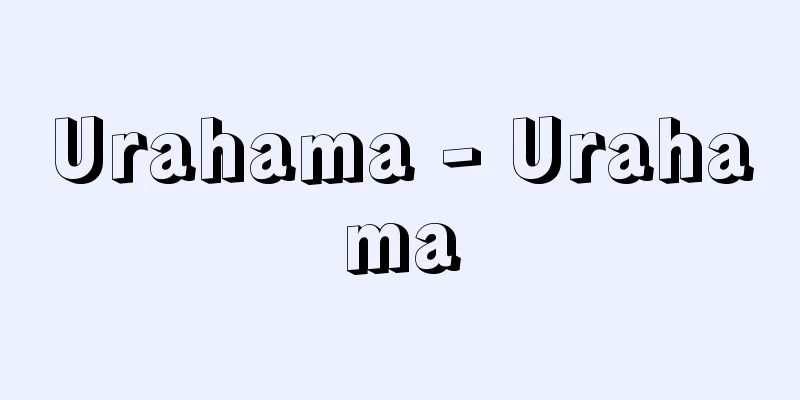Urahama - Urahama

|
Generally speaking, a cape or promontory that juts out into the sea is called a ura, whereas a coastal plain consisting of sand, mud and pebbles is called a hama. These are place-name terms used throughout premodern Japan to indicate fishing villages. In ancient society, under the principle of public and private benefit under the Ritsuryo system, exclusive ownership of urahama was prohibited, and the entire local community was allowed to use and benefit from them. However, in a competitive manner, fishing grounds were also used by groups of fishermen such as 'Niebito' and 'Amabe', who submitted offerings directly to the royal authority. Source: Heibonsha World Encyclopedia, 2nd Edition Information |
|
一般に,海に突出した崎・岬に対して陸地が湾曲して湖海を抱えこんでいるところを浦といい,岩塊の露出した磯に対して砂泥や小石からなる海岸平地を浜という。日本の前近代を通じて漁村を表示する地名用語。古代社会においては,律令制的な公私共利の原則の下に浦浜の排他的領有は禁じられ,地域共同体全体による用益が行われていたが,他面それと競合する形で,王権に直属して贄(にえ)を貢納する贄人・海部(あまべ)などの漁民集団の漁場利用も存在していた。
出典 株式会社平凡社世界大百科事典 第2版について 情報 |
Recommend
Shinzo Fukuhara
Photographer. Born in Tokyo. Entrepreneur who ser...
Ongisetsu - Ongisetsu
The idea that each sound or each line of the Japan...
Tunghan
…A name of Eastern Turkish origin referring to th...
Ryohen - Ryohen
[Born] 1193/1194? Kyoto [Died] August 28, 1252 (Ke...
January Uprising (English spelling: Powstanie Styczniowe)
The last and largest revolt (1863-64) by the Polis...
Kennan, George Frost
Born: February 16, 1904, Milwaukee, Wisconsin [Die...
Time - Time
〘noun〙① Events held throughout the year. Annual ev...
Ami [town] - Ami
A town in Inashiki County, occupying the plateau s...
Port charges - port charges
A general term for various taxes, facility fees, s...
Khanka Lake (English spelling) Ozero Khanka
A lake on the border between China (Heilongjiang P...
Dynastes neptunus (English spelling) Dynastes neptunus
… [Chokane Hayashi]. … *Some of the terminology t...
Shihab (English spelling)
A political leader from the Druze family of Shihā...
CABIN
… Let me introduce some recent topics in this fie...
tithe barn (English spelling) tithebarn
…On the other hand, the warehouses and granaries ...
Appar (English spelling)
One of the Shaivite religious poets, also known as...

![Sadamitsu [town] - Sadamitsu](/upload/images/67cbab934287b.webp)



![Taiki [town] - Taiki](/upload/images/67cc158f15c03.webp)



